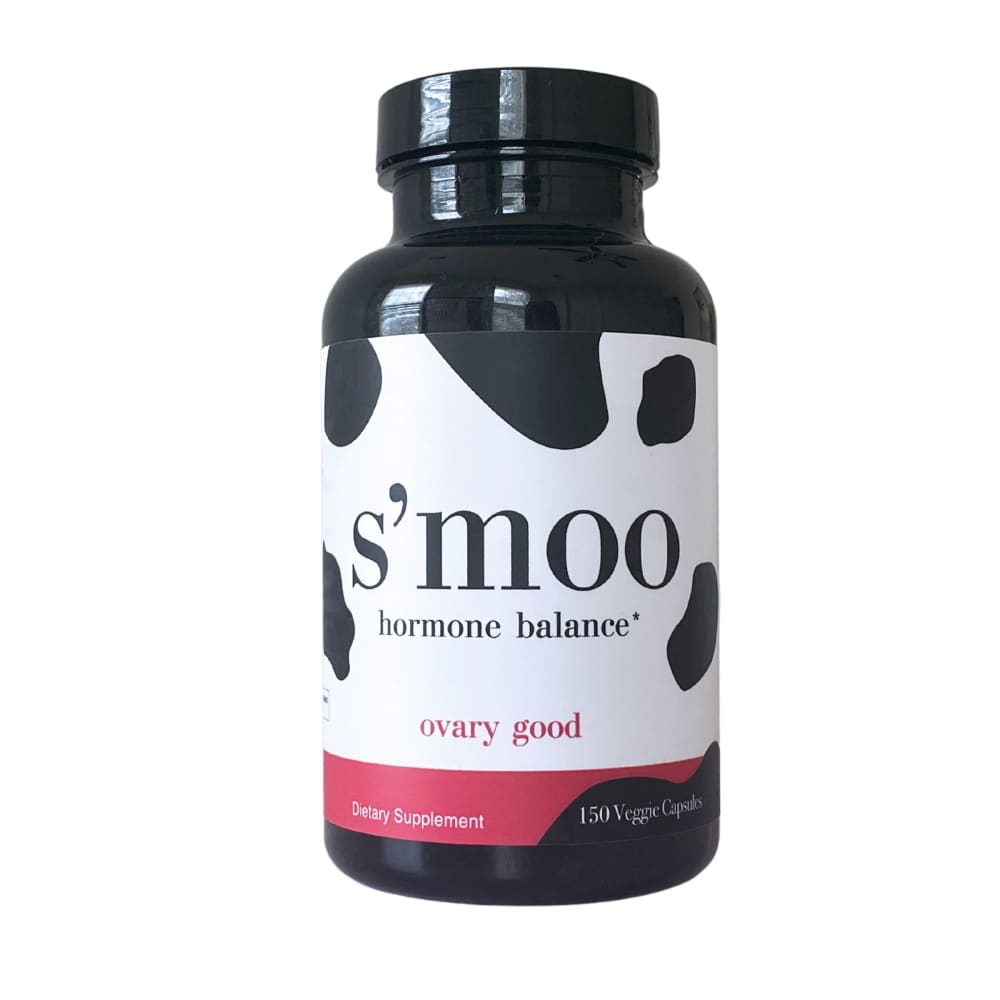What Is Cervical Mucus and How Does It Affect Menstrual Blood?
When we discuss menstrual health, there are often whispers and nudges about that "time of the month." We've grown accustomed to understanding the basics of period blood, but when it comes to cervical mucus, there's still a cloud of mystery. As women continue to empower themselves through knowledge and take charge of their health, it's time to demystify cervical mucus and its relationship with menstrual blood.
This article aims to shine a light on these topics, giving you insights to help make informed decisions about your health. Whether you've ever wondered, "Why is my menstrual blood slimy?" or encountered cervical mucus in period blood, we'll provide answers that satisfy your curiosity.
What Is Cervical Mucus?
Cervical mucus is a gel-like substance produced by the cervix, which is the lower part of the uterus that connects to the vagina. This fluid plays a significant role in a woman's reproductive system. It can change in consistency, amount, and appearance depending on various factors, primarily hormone levels.
At the heart of its function, cervical mucus serves several purposes:
- Protection: It acts as a protective barrier, preventing harmful bacteria from entering the uterus and potentially causing infections.
- Fertility Indicator: The consistency and quantity of cervical mucus can be an indicator of where you are in your menstrual cycle. For instance, around the time of ovulation, you may notice an increase in the amount, and it may take on a slippery, egg-white like consistency, which facilitates the movement of sperm through the cervix.
- Lubrication: It aids in vaginal lubrication, ensuring comfort and reducing vaginal dryness, especially during intimate moments.
Types of Cervical Mucus
Understanding the different types of cervical mucus can help women better monitor their menstrual cycles and fertility periods. Here's a breakdown of the various kinds:
- Sticky and Clumpy: Typically found after menstruation, this type of mucus is not conducive for sperm movement. It's more dense and sticky in its texture.
- Creamy and Milky: As estrogen levels start to rise after menstruation, the cervical mucus takes on a creamier, lotion-like consistency.
- Watery: This type of mucus is clear and might be mistaken for vaginal discharge. It signifies rising estrogen levels and can appear before ovulation.
- Raw Egg White: Often considered the most fertile type of mucus, it's slippery and stretchy, resembling raw egg whites. This type of mucus allows for optimal sperm movement and typically signifies ovulation.
You might have also wondered about occurrences like black stringy discharge or asked yourself, "Why is my period blood mucus?" These can be variations or combinations of the types mentioned, influenced by factors discussed below.
Factors That Can Change Your Cervical Mucus
The texture, consistency, and appearance of cervical mucus don't remain constant throughout your menstrual cycle and can be affected by several factors:
- Hormone Levels: The primary driver behind the changes in cervical mucus. As estrogen levels rise and fall during a menstrual cycle, it directly impacts the consistency and amount of cervical mucus.
- Medication and Supplements: Certain medications, especially hormonal birth control like birth control pills, can alter the nature of cervical mucus. Similarly, dietary supplements might have an effect, albeit generally minor.
- Sexual Activity: Intercourse can temporarily change the consistency of cervical mucus due to the introduction of other fluids.
- Pregnancy: During the early stages of pregnancy, there might be an increase in the production of cervical mucus, acting as a protective plug for the uterus.
- Menstrual Cycle Stage: As mentioned earlier, different stages of the menstrual cycle bring about variations in the mucus due to fluctuating hormone levels.
- Hormonal Imbalances: Conditions such as Polycystic Ovary Syndrome (PCOS) can influence mucus consistency and amount. Supplements like Ovary Good, which contain Myo-Inositol and other ingredients, are designed to promote hormonal balance and could affect the nature of cervical mucus.
- Age: As women approach menopause, the nature of cervical mucus can change, often leading to decreased production and increased vaginal dryness.
How Can Cervical Mucus Change Throughout Your Menstrual Cycle?
The menstrual cycle, lasting on average 28 days, witnesses an ebb and flow of hormones that bring about a spectrum of changes in a woman's body, including the nature of cervical mucus. Here's a step-by-step walkthrough of these changes throughout the cycle:
- Menstrual Period (Days 1-5): During menstrual bleeding, you may notice a mixture of cervical mucus with your blood. This can sometimes lead to questions like "Why is my menstrual blood slimy?" However, it's a natural combination of the shedding uterine lining and cervical fluid.
- Post-Menstruation (Days 6-9): After the menstrual period ends, there might be little to no cervical mucus present. Any mucus that is present may be sticky and clumpy, marking a less fertile phase.
- Pre-Ovulation (Days 10-12): As estrogen levels begin to climb, the cervical mucus becomes more abundant. It transforms from a creamy, milky consistency to a more watery texture, signifying the onset of a potentially fertile phase.
- Ovulation (Days 13-15): This is when fertility peaks. The mucus now resembles raw egg white – clear, stretchy, and slippery. It's the body's natural mechanism to facilitate sperm movement, optimizing the chances of conception.
- Post-Ovulation (Days 16-28): After ovulation, there's a shift in dominance from estrogen to progesterone. This causes the cervical mucus to become less abundant, returning to a sticker, denser form, signaling a decrease in fertility.
Throughout the cycle, external factors like stress, medication, or even infections can lead to irregularities. Irregular bleeding or irregular periods might coincide with unexpected mucus consistency, emphasizing the importance of tracking both your menstrual flow and the nature of your cervical mucus.
By understanding these variations, not only can you demystify experiences like cervical mucus in period blood, but you can also harness this knowledge for natural methods of birth control like the cervical mucus method. However, always consult with a healthcare provider before making decisions based on cervical mucus consistency alone.
How Your Cervical Mucus Influences Menstrual Blood
While it's common knowledge that menstrual blood is primarily composed of the shedding uterine lining, the presence of cervical mucus plays an influential role in its appearance, texture, and consistency.
- Texture and Consistency: "Why is my period blood mucus?" is a question that often stems from noticing the slightly gooey texture during menstruation. Cervical mucus can mix with menstrual blood, resulting in a slimier texture. This is especially noticeable during the transitional days at the beginning or end of a menstrual period.
- Volume and Blood Flow: Depending on the phase of the menstrual cycle, increased cervical mucus can sometimes give the illusion of heavier bleeding. The mix of mucus and menstrual blood can lead to a more abundant flow on certain days.
- Appearance: Variations in cervical mucus can also influence the appearance of menstrual blood. For instance, the presence of clear mucus in period blood can make the blood seem lighter in color. Conversely, the presence of black stringy discharge could be due to older blood mixing with cervical mucus, resulting in a more textured appearance.
- Protection During Menstruation: Cervical mucus continues to serve its protective function during menstruation. By mixing with menstrual blood, it can help reduce the risk of infections by trapping and preventing harmful pathogens from ascending into the uterus.
- Lubrication and Comfort: Even during menstruation, the lubricative properties of cervical mucus remain at work. This is particularly beneficial during heavier bleeding days, helping reduce discomfort that can arise from vaginal dryness.
While cervical mucus plays a significant role in influencing menstrual blood, other factors like hormonal imbalances, use of hormonal birth control, or underlying health conditions can also impact menstrual bleeding. For women looking to manage hormonal imbalances, Ovary Good- with its potent mix of Myo-Inositol, Magnesium Citrate, Ashwagandha, and other ingredients, can be beneficial in promoting hormonal balance and regular menstrual cycles.
Conclusion
The journey of understanding your body is both fascinating and empowering. By shedding light on cervical mucus and its interplay with menstrual blood, we hope to equip every woman with knowledge that can aid in making informed health decisions. Whether you're tracking your fertility, monitoring menstrual irregularities, or just satisfying a natural curiosity, the role of cervical mucus in your menstrual health is undeniable.
Sources:
https://my.clevelandclinic.org/health/body/21957-cervical-mucus
https://americanpregnancy.org/getting-pregnant/cervical-mucus/
https://my.clevelandclinic.org/health/articles/10132-menstrual-cycle
https://www.acog.org/womens-health/faqs/fertility-awareness-based-methods-of-family-planning
Written by: Amanda L, R.N.
Amanda, a seasoned nurse with over a decade of expertise in clinical environments, has established herself as an authority in family medicine and multiple specialized fields. Her practice is anchored in a holistic approach to health, emphasizing wellness and preventive care. Amanda has a profound interest in women's health care, passionately dedicating a significant portion of her expertise and content creation to addressing and enhancing women's wellness and health issues. Currently, she channels her extensive knowledge and experience into creating content for health and wellness brands.










